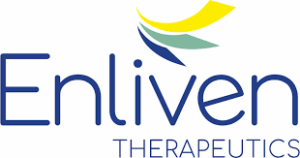To Improve Upon a Miracle Drug: Overcoming Drug Resistance & Intolerance in CML

 By: Ben Hohl, Chief Finance Officer and Head of Corporate Development, Enliven Therapeutics
By: Ben Hohl, Chief Finance Officer and Head of Corporate Development, Enliven Therapeutics
May 10, 2001 was an otherwise unremarkable day. Bridget Jones’ Diary was usurped by The Mummy Returns at the box office, while It’s All for You by Janet Jackson was in the middle of a seven-week streak at the top of the Billboard 100. That afternoon, the FDA also announced the approval of imatinib (Gleevec).
The news garnered tremendous attention as it was the first targeted therapy that inhibits a specific genetic abnormality in cancer cells to be approved by the FDA. Even back then, it was hailed as a “miracle drug” that would usher in a new era for cancer therapy. In many ways, they were right. Gleevec, sold by Novartis, hit peak annual sales of over $4 billion until it became generic in 2016. Imatinib effectively turned chronic myeloid leukemia, or CML, into a long-term condition. Before imatinib, the 10-year survival rate for patients with CML was less than 20%; today, it is over 80%.1
Yet, almost a quarter of a century after imatinib’s landmark approval, a growing number of patients, oncologists, and drug developers, including Enliven Therapeutics, are still seeking to provide people living with CML a better treatment option. While imatinib and other tyrosine kinase inhibitors, or TKIs, have undoubtedly positively impacted the lives of many people living with CML, thousands of patients are still looking for drugs that provide better efficacy, tolerability and convenience.
The Silver Bullet
In retrospect, the simplicity in the messaging around imatinib probably played a non-trivial role in the public misconception that it was a “silver bullet” for patients with CML, and for cancer in general. This blood cancer, which occurs in approximately 1 out of 500 people, is caused by a gene translocation in chromosomes 9 and 22 that creates a fusion gene and an aberrant protein called BCR::ABL1.2 This new protein is also an oncoprotein and highly active tyrosine kinase that drives uncontrolled cell division of leukocytes that leads to CML. Imatinib is a small molecule inhibitor of this particular tyrosine kinase, and preclinical studies consistently showed its impact on blocking kinase activity mediated by BCR::ABL1. When clinical trials demonstrated that imatinib had a significant impact on hematologic (peripheral blood counts normalizing) and cytogenetic (bone marrow) response rates, the FDA granted Novartis an accelerated approval to market the drug. Subsequent trials proved the drug also led to a meaningful survival benefit.

“ELVN-001 is a highly selective ATP-competitive inhibitor of BCR:ABL1, unlike the past generations of ATP-competitive inhibitors that hit off-target kinases. This lack of selectivity has led to undesirable tolerability profile for long term treatment.” Reference: Company data on file
In the following decade, the FDA approved the use of dasatinib and nilotinib. In fact, today there are six approved TKIs with the addition of bosutinib, ponatinib, and the most recently approved drug, asciminib. These newer TKIs drive deeper and faster molecular responses, while also addressing resistance mutations that emerged from the previously approved drugs. Each of the approved ATP-competitive TKIs has a distinct profile, which has allowed all of them to become an important part of the arsenal of available therapies that have transformed CML from a fatal disease into a chronic condition, with life expectancy in the decades for many patients.
Other patients, however, are not as lucky. Over time, CML can develop resistance to TKIs and in some cases patients must eventually switch therapies. In fact, around 65% of patients switch therapies due to a lack or loss of response to their prior therapy.3 One reason why patients lose response is due to the emergence of point mutations in the BCR::ABL1 protein. Most of the available TKIs are susceptible to such resistance mutations and can gradually lose efficacy, at which point patients with CML no longer respond to the drug. Since the current standard of care in CML continues to be life-long treatment with TKIs, the emergence of drug resistance is an area of high unmet need in patients.
However, unlike many other cancer indications where there is a clear first-line therapy, second-line therapy and so on, CML is different. All of the drugs are used interchangeably throughout lines of therapy. Every patient is different, and because all available options have different mutational and tolerability profiles, doctors and patients are continuously searching for the therapy that will best serve each individual patient.
Historically, the most prevalent and problematic mutation in CML has been T315I.4 This mutation alone renders four of the six currently available TKIs completely powerless to prevent disease progression. Only ponatinib and asciminib are approved for use in patients with CML that harbor T315I mutations. These drugs are able to largely overcome resistance borne from T315I mutations because of how or where they bind to the BCR::ABL1 protein. However, that difference can also lead to other significant issues.
For example, ponatinib’s ability to bind multiple BCR::ABL1 mutations also allows it to bind to other protein kinases, conferring unintended, off-target side effects. In fact, ponatinib’s label comes with a black box warning for potential arterial occlusive events, heart failure, venous thromboembolism, and hepatotoxicity.
New Drug Mechanism Leads to New Resistance Mutations
Asciminib, on the other hand, uses a completely different binding mechanism to the other five TKIs approved in CML. It is an allosteric inhibitor that binds to the myristoyl pocket of the ABL1 protein instead of directly to the ATP-binding site. When asciminib binds, the BCR::ABL1 protein undergoes a conformational change that closes the ATP-binding site and switches off its kinase activity. Asciminib was approved in 2021 for the third-line and later settings but gained further approvals across all lines of therapy in 2024, and can now be used as a first-line treatment after a pivotal Phase 3 study called ASC4FIRST showed it offered better efficacy and safety than prior generation TKIs.

“The switching dynamics in CML are unlike other cancer indications and highlight the significant need for better treatment options. Patients switch therapies due to lack or loss of response, intolerance, DDIs, and other reasons as they search for the drug that serves their needs best.” Reference: Atallah EL, et al. J Health Econ Outcomes Res. 2022 Aug 4;9(2):19-29.
Interestingly, data from ASC4FIRST as well as other emerging literature suggests that, compared to other TKIs, resistance mutations can occur more quickly and frequently with asciminib. In fact, there is now a growing list of new mutations. These new mutations are due to that fact that asciminib is an allosteric inhibitor, whereas all of the other previously approved drugs are ATP-competitive TKIs. For these emerging mutations, there is a very high concordance between in vitro resistance to asciminib and other allosteric inhibitors, implying a class-like effect.
Mutations associated with asciminib resistance can occur outside of the myristoyl pocket, and throughout the BCR::ABL1 protein.5 There now appear to be at least 20 distinct mutations that confer resistance to asciminib, although only a handful are in the myristoyl pocket. These mutations outside of the myristoyl pocket still allow asciminib to retain moderate to high binding affinity, but the mutations cause the allosteric mechanism to “break,” rendering asciminib ineffective. Because asciminib was only recently approved, it is highly likely that more mutations will be identified that not just block drug binding, but alter kinase structure and activity in a way that disrupts allostery and confers resistance to asciminib and other allosteric TKIs.
Overcoming Resistance With Chemistry
Despite the promise of asciminib and allosteric TKIs, it is also increasingly apparent that there is a need for more treatment options, especially for patients that become resistant to asciminib. Enliven Therapeutics is developing ELVN-001, a potential best-in-class ATP-competitive TKI. Unlike other currently available ATP-competitive inhibitors whose issues stem primarily from a lack of selectivity, a key differentiator of ELVN-001 is that it is significantly more selective than the prior generation of ATP-competitive TKIs. Furthermore, its structure potentially allows it to have broad activity against not just T315I, but emerging mutations that confer resistance to allosteric TKIs, like asciminib. Both preclinical and clinical data show ELVN-001 is potentially a best-in-class therapy not only for the general CML patient population, but also for a broad range of mutations including the emerging category of allosteric mutations.
ELVN-001 targets the P-loop in the unique “folded-in” active conformation of BCR::ABL1, unlike some other TKIs that bind to the more common P-loop “extended” conformation, which makes them more promiscuous. Moreover, its unique structure helps it avoid a steric clash with the isoleucine in T315I mutations that most other ATP-competitive TKIs suffer from. Its favorable properties also mean it is not a substrate for common drug efflux transporters, like P-gp and BCRP, which are also thought to play a role in drug resistance.
Enliven is now evaluating ELVN-001 in the ongoing Phase 1 ENABLE study in patients with previously treated CML, with plans to begin a pivotal Phase 3 clinical trial next year. At the European Hematology Association 2025 Congress, Enliven reported a cumulative major molecular response, or MMR, rate of 47% by 24 weeks on ELVN-001, with 32% of patients achieving MMR by 24 weeks, which compares favorably to precedent Phase 1 trials of the approved BCR::ABL1 TKIs. The ENABLE trial also enrolled patients that were significantly more heavily pretreated than previous Phase 1 clinical trials in CML; 67% of patients in the ENABLE study have had three or more unique TKIs (26% have had 5 or more), including receiving either ponatinib, asciminib, or both.
The Search for Not Only Better Efficacy, But Also Better Tolerability and Convenience
While TKIs have transformed CML into a chronic disease, these patients still must take daily therapy for decades. During that time many patients are forced to switch therapies not only because of a lack or loss of response, but also because of drug intolerance. Of patients who switch therapy, around 30% do so due to intolerance.6 A patient population that requires daily therapy to manage a chronic disease will naturally seek drugs that are more convenient and tolerable; when they must take a drug every day for decades, everything matters. Although edemas, nausea, diarrhea and headaches may seem like trivial side effects for most cancers, in CML these issues matter to patients and is why drug intolerance is one of the main reasons patients switch TKIs. Many of the drug intolerance issues stem from the lack of selectivity of previously approved ATP-competitive TKIs. In contrast, the data reported to date has suggested that ELVN-001 is well tolerated, consistent with its high selectivity for BCR::ABL1.
Data have also so far demonstrated that ELVN-001 has a low potential for drug-drug interactions, or DDIs. This is important as most currently available TKIs have risk of DDI with CYP inhibitors or inducers, a class of drug commonly taken to manage high cholesterol or blood pressure. The average age of first CML diagnosis is around 66 years, and over 50% of patients present with a comorbidity, often cardiovascular or metabolic conditions.7 In fact, the average CML patient takes approximately five concurrent medications, meaning DDIs are top of mind for both patients and physicians.8
For example, many statins that are used to manage cholesterol can reach toxic levels due to DDIs with the existing drugs. Certain foods such as grapefruit or Seville oranges must be avoided with some of the existing anti-CML drugs due to DDI. As patients age on therapy the DDI issues associated with the approved TKIs may become difficult to manage.
As people with CML live longer, new challenges are emerging — tolerability, resistance, and long-term disease management. That is why Enliven Therapeutics is developing ELVN-001, a highly selective ATP-competitive TKI designed to address the unmet needs in the evolving CML treatment paradigm and could represent a new option for long-term disease control.
Thanks to the pioneering work of researchers advancing our knowledge of basic science and cancer, the field has been able to transform the lives of millions of patients with CML. But challenges remain, and everyone in the industry strives to improve upon the “miracle drug” imatinib, that was approved almost 25 years ago. I am grateful every day to the people working at Enliven Therapeutics that are all dedicated, like I am, to improving the standard of care as well as the quality of life for all patients suffering from CML.
References
- Huang X, et al. Cancer. 2012 Jun 15;118(12):3123-7.
- American Cancer Society. “Key Statistics for CML.” https://www.cancer.org/cancer/types/chronic-myeloid-leukemia/about/statistics.html (November 2025)
- HCP Qualitative & Quantitative Interviews (ClearView).
- Soverini S, et al. Leuk Res. 2014;38:10–20.
- Leyte-Vidal A, et al. ESH. May 2025. Milan, Italy.
- HCP Qualitative & Quantitative Interviews (ClearView).
- American Cancer Society. “Key Statistics for CML.” https://www.cancer.org/cancer/types/chronic-myeloid-leukemia/about/statistics.html (November 2025).
- Osorio S, et al. Annals of hematology. 2018; 97,11: 2089-2098, and product label information.
Total Page Views: 349















